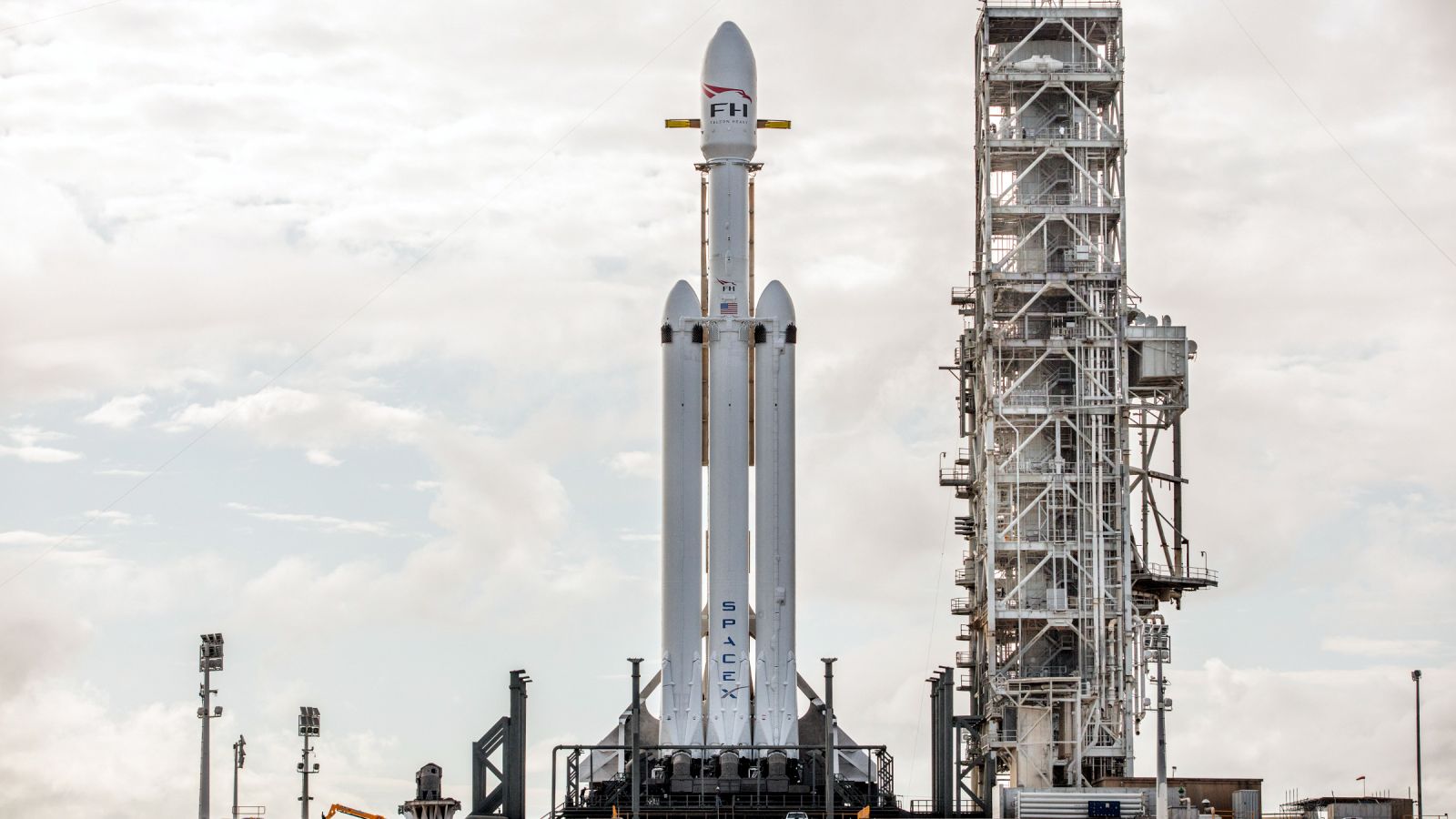Five ways today’s SpaceX rocket launch could go explosively wrong

Today’s launch of an enormous new SpaceX rocket is a test, and it could go wrong. But that’s so vague—what, exactly, can turn this unmanned 20-story launch vehicle, filled with tons of explosive propellant, into a very expensive firecracker?
SpaceX CEO Elon Musk himself explained some of the ways that could happen yesterday, before today’s attempt to send the Falcon Heavy, carrying a Tesla roadster, into orbit around Mars. “I’m sure we’ve done everything we could do to maximize the chances of success of this mission,” Musk said, describing himself as “giddy” and “at peace.”
Still, he laid out a few times during the flight when things might go wrong:
At ignition
Getting all the twenty-seven engines on the rocket to ignite at a precise time is tricky, and it’s possible that their noise and vibrations could create unexpected acoustic resonances. “Do they shake together, potentially impacting one another?” Musk asked rhetorically.
Such vibrations could tear apart a vehicle, but SpaceX engineers have simulated launch conditions multiple times and taken steps to contain the vibrations. Musk said that if the rocket cleared the tower, that would be a great start. Any destructive accident on the actual launch pad will mean months, and millions of dollars, worth of repairs.
There’s also a hint of concerns that have dogged rocket designers before: The company uses ultra-chilled fuels that can cause ice to build up on a rocket, and even a small amount of ice falling off and colliding with the vehicle at high speed could cause damage.
“We’re a little bit worried about ice potentially falling from the upper stage on to the side boosters,” Musk said. “That would be like a cannonball through the nosecone.”
Going past the speed of sound
The rocket is aiming for a velocity of more than 17,500 miles per hour, and will quickly accelerate pass the speed of sound. But, Musk warns, “going through the sound barrier, you get super-sonic shockwaves that could cause a structural failure as it goes trans-sonic.”
At “Max Q”
Rocket scientists use the variable “q” to measure the changing pressure on their vehicle. As the Falcon Heavy accelerates upwards, it will reach a point where its velocity and the atmospheric pressure combine to put the highest stress on the rocket’s structure. “When the force on the rocket is greatest, that’s possibly where it could fail as well,” says Musk. That will happen approximately one minute and six seconds into today’s flight.
During separation
One of the most novel features of the Falcon Heavy is that its two side boosters are designed to detach from the rocket and fly themselves back down to the ground to be reused during future flights. Performing this maneuver at mission speed will be tricky.
Musk says that “the separation systems have not been tested in flight, [though] we have tested everything configurable for the separation system for the side boosters on the ground.” This makes sense, given that it’s hard to mimic the behavior of 40-meter-tall cylinders tumbling through the vacuum at several times the speed of sound.
On the plus side? “Once the second stage separates from the booster, we are in known territory,” Musk says.
In the Van Allen belt
Before it heads for Mars, the second stage of the Falcon Heavy rocket and its Tesla roadster cargo will spend six hours cruising through deep space, in order to demonstrate the rocket’s ability to deliver future satellites to these distant orbits. During this “grand tour,” it will pass through the Van Allen belt, an area of space near Earth that contains high radiation levels, which could fry the rocket’s electronics—among other potential problems. “The fuel could freeze, and the oxygen could vaporize, all of which could inhibit the burn for trans-Mars injection,” Musk told reporters.
Source Link:- https://qz.com/1199146/spacex-falcon-heavy-elon-musk-explains-five-ways-the-rocket-launch-could-go-wrong/